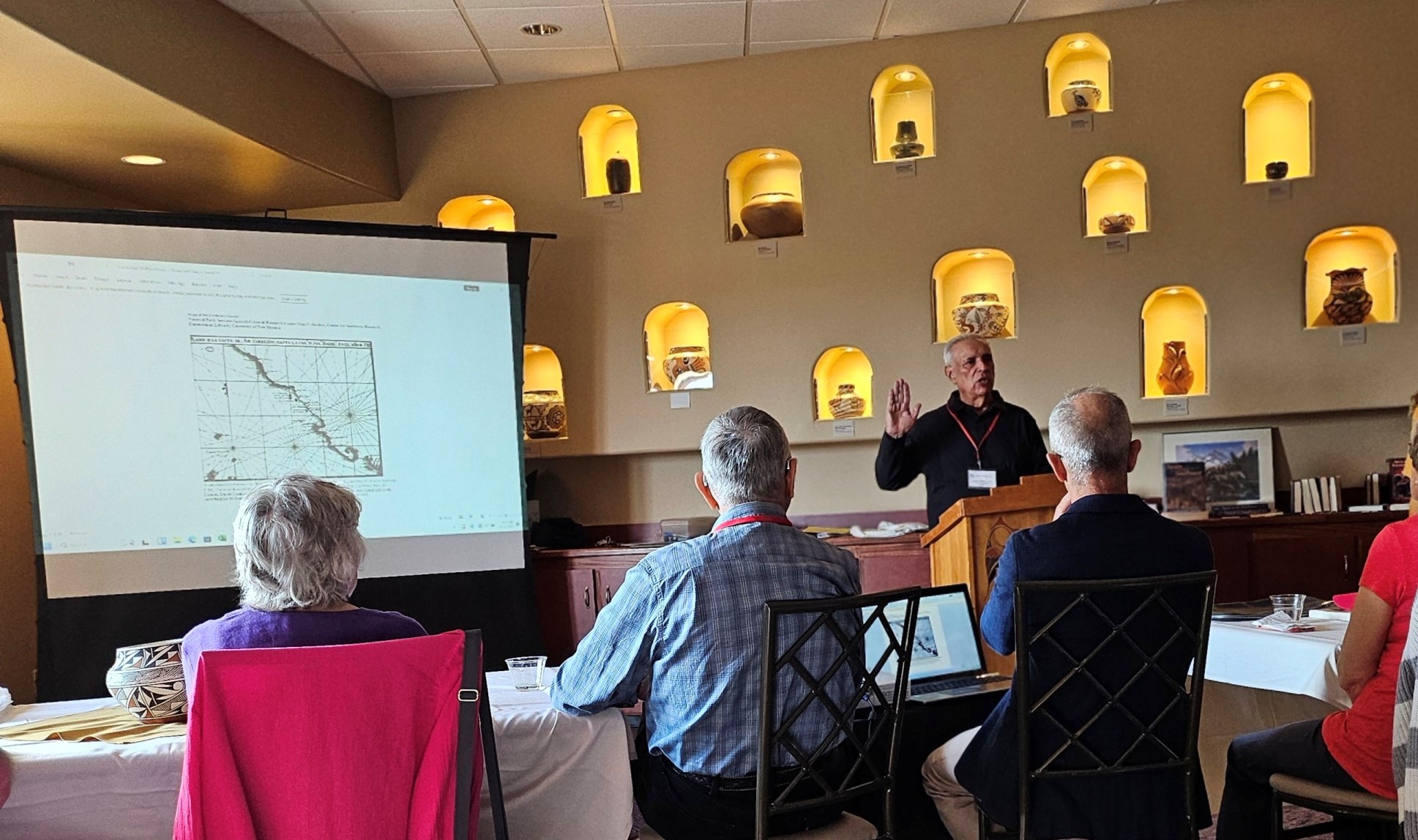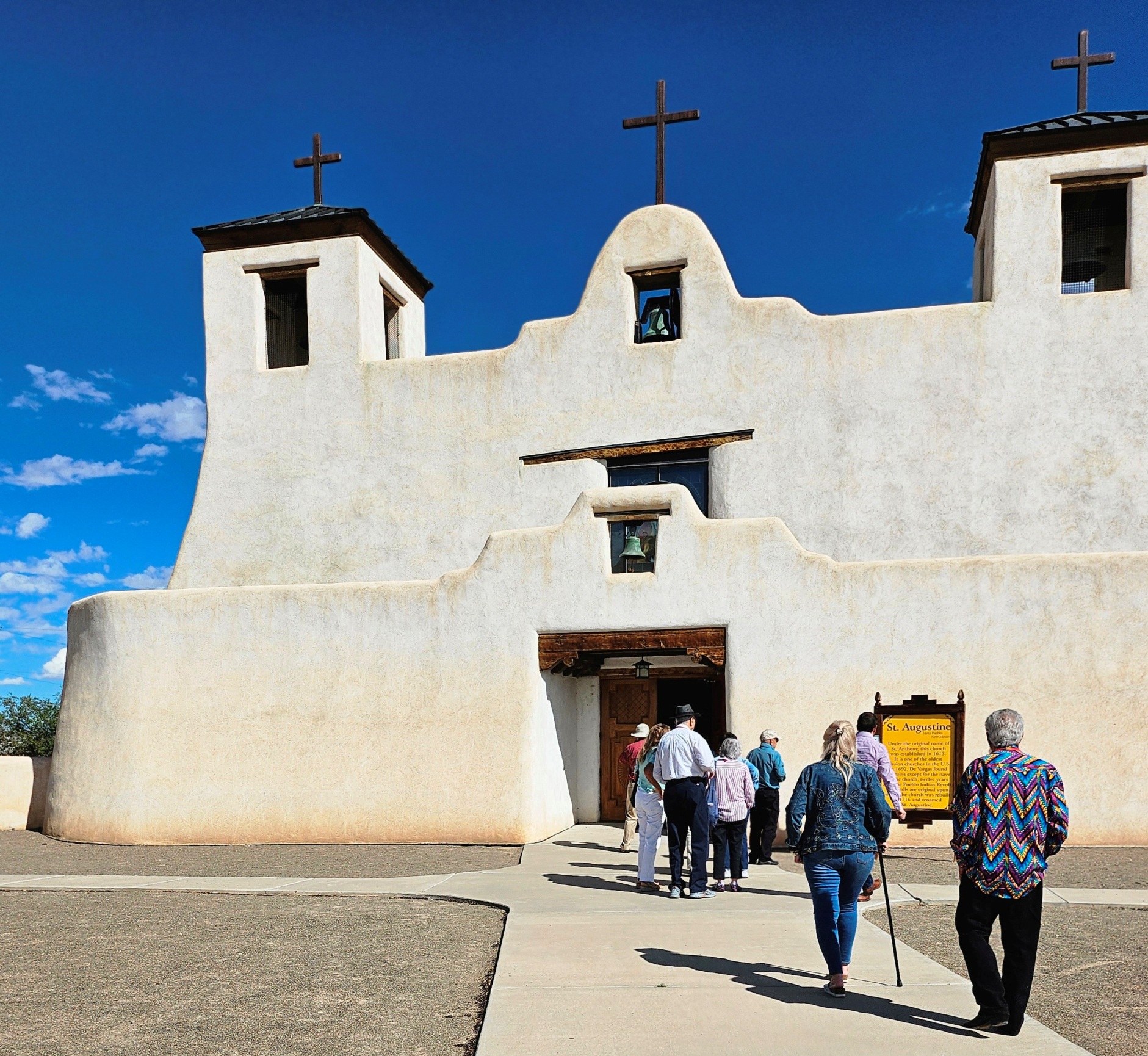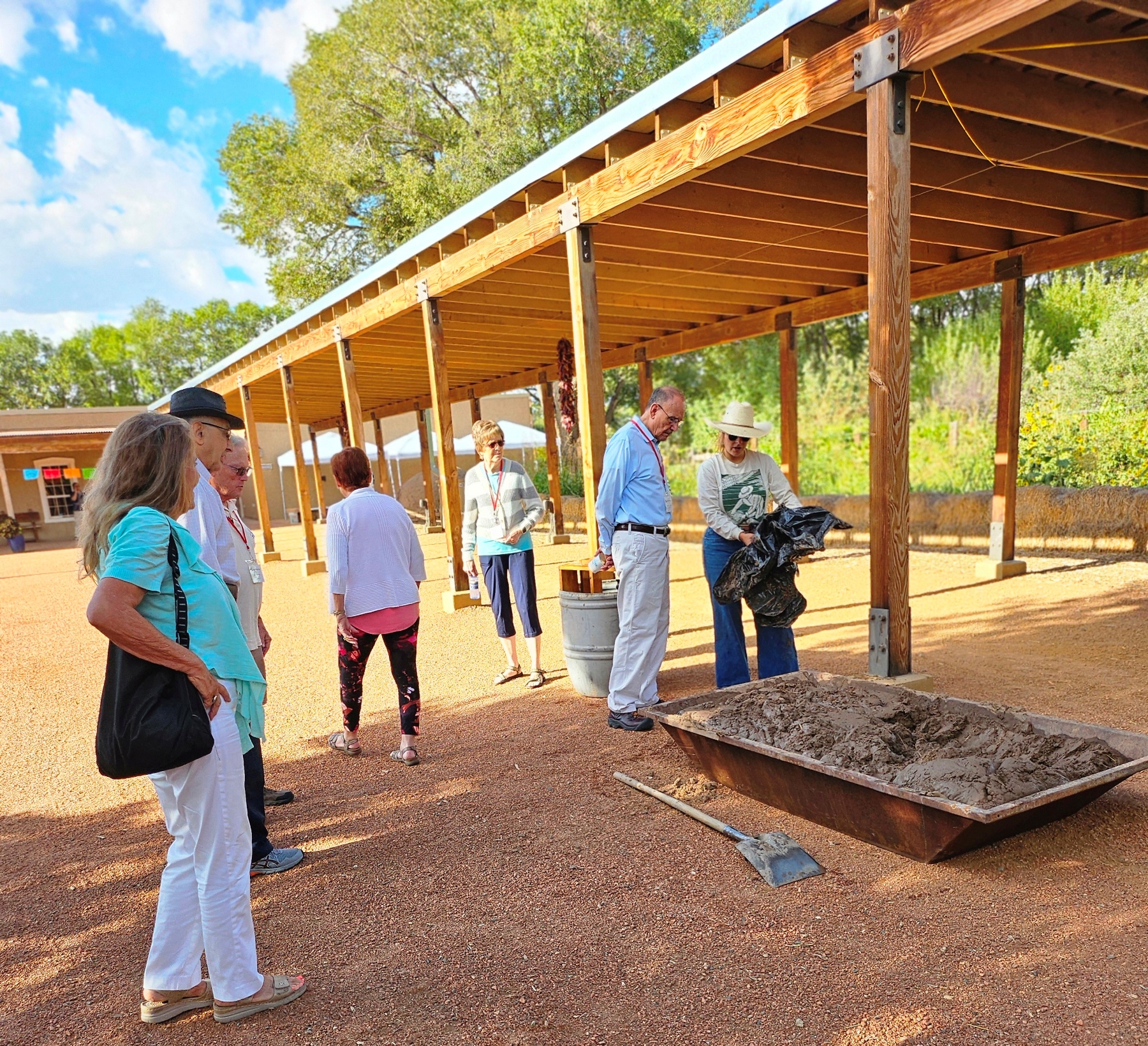The 27th Annual ANZA Society Conference was held in the Albuquerque and Santa Fe Area during Sept 19-22, 2024, and was enjoyed by attendees and presenters alike. Friday, September 19 presentations were held at the Indian Pueblo Cultural Center with views of the Sandia Mountains. The south wall held 19 lovely pottery bowls from each of the NM Pueblos, lit to highlight the unique bowl distinctions! The award winning authors and historians were Dr. Joseph Sanchez, UNM S.W. Research Ctr., NM; Dr. Javier Torre, Univ. of Denver, CO.; Dr. Linda Tigges, Prof. UNM., NM; Dr. Thomas E. Chavez, NM State Historian, Natl Hispanic Cultural Ctr. CEO.; Henrietta Christmas, Chief Genealogist, D.A.R, NMHG of NM.; Dr. Roger Zimmerman, Pres. ABQ Historic Society.; John Taylor, Past President/Board, Local/County/State Historic Societies.; Dr. Charles Saenz, Adam State Univ., CO.; Daniel Judkins, ANZA Trail advocate, TUBAC Presidio, AZ. The variety of research presented was significant and outstanding!

Saturday, September 20 was our field trip day with a bus tour starting with a tour of downtown Albuquerque. Via US Hwy. 66, turning into the early 19th century neighborhood, the Barelas Community was built as a result of the arrival of the Santa Fe Railroad. It is along the old pre-1935 US Hwy. 66 and an area where the National Hispanic Cultural Center was built, adjacent to the old El Camino Real de Tierra Adentro (CRDTA). We visited the original Josefa Baca land of 1733, which was part of a larger Spanish land grant, serving as a “parje” (rest stop) on the CRDTA. The 5,700 sq ft adobe building dates back to the 1860’s and was a residence, mercantile, trading post, stagecoach stop and post office, sitting on 10 acres. Known as the Gutierrez-Hubbell Heritage House, this open space area is curated as a museum. It preserves the heritage gardens, protects the wildlife habitat and teaches the agricultural heritage, being an example of the cultural heritage of the area. Gov. Anza and two other Spanish Government officials conducted the probate of this wealthy estate during his tenure, taking about two weeks to conduct. Items of the probate are listed and are very interesting!
Only 5 miles to the Isleta Pueblo, we drove into the Pueblo and were met by the local priest who spends one day a week there. He unlocked the historic St. Augustine Adobe Church whose construction began in 1613 and is one of the oldest and largest adobe churches in the US. The Indigenous uprising against the Spanish in the 1680 Pueblo revolt resulted in the destruction of the church, leaving only adobe walls. Gov. Don Diego de Vargas returned in 1693. He determined that since the church walls still stood, it could be remodeled and put into use as it has been since the Spanish returned. Isleta was the only Pueblo supporting the Spanish and abandoned Isleta to flee South to El Paso/Juarez with the Spanish in 1680.

Our bus ride to Santa Fe took the East of Sandia Mountain Route Hwy. 14. This route heads north on the Turquoise Trail, passing through Cibola Forest with the Sandia Ski Basin nearby. We then headed past Golden, a small gold-mining town with a historic trading post, church and the Henderson general store of 1839. About 11 miles north was our lunch stop at Madrid’s “Mine Shaft Saloon,” where several movies were filmed, being quite a depiction of an old west place. The town of Madrid, dating back to mid-1800’s, later became a company owned CF&I mine in the 1890’s. Both hard and soft coal were mined here (uniquely found in only two other mines in the world) with shafts going as deep as 2,500 ft. Madrid supplied coal for the Santa Fe Railroad, consumers and the US Government. This abandoned town in the 60’s was settled by squatters and “hippies.” Its revival has turned Madrid into an Artists’ Community and mecca. With its’ proximity to Santa Fe and the original tavern, it has become a travel destination.

Onto Santa Fe, we drove down the Santa Fe Trail, and with the very “tight” roads around the historic area, we still managed to be able to spend time on the Historic Plaza. We sighted the newly recovered (from a hidden location since 2020) statue of Gov. Don Diego de Vargas at the Palace of the Governors (which was Gov. Anza’s residence). Some visited the NM History Museum along with areas around the Plaza. On our return to Albuquerque, we had a quick stop and glance at the Christo Rey Church, where the Bernardo Miera y Pacheco (a polymath), his masterpiece “La Castrense”, a “Stone Alter Screen” was observed. Don Bernardo accompanied Gov. Anza on several punitive expeditions. Don Bernardo’s skills were considerable and invaluable to subsequent explorers due to his artistic ability and intellect. He is considered to be perhaps the most prolific and important cartographer of New Spain.
Arriving in Old Town Albuquerque, we enjoyed an evening dinner held off the Plaza in a restaurant adjacent to the church. One of New Mexico’s foremost notable adjunct researchers, a professor at UNM, Latin American and Iberian Institute, Thomas E. Chavez, provided insights into challenges faced by Gov. Anza in the Spanish New Mexico Colonial Experience. He is the author of over 12 books, among them “Spain and the Independence of the United States,” as well as his latest work of several years just published in 2024 “The Diplomacy of Independence: Benjamin Franklin Documents in the Archives of Spain”, edited by Thomas E. Chavez.
